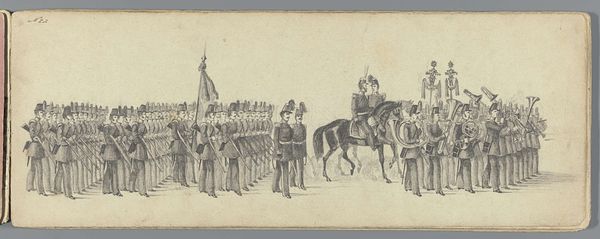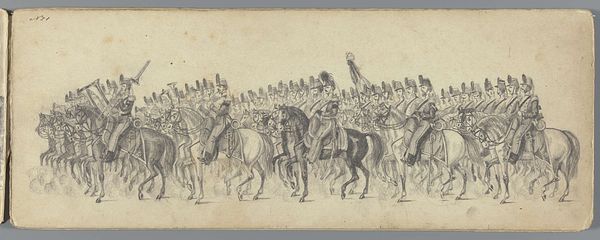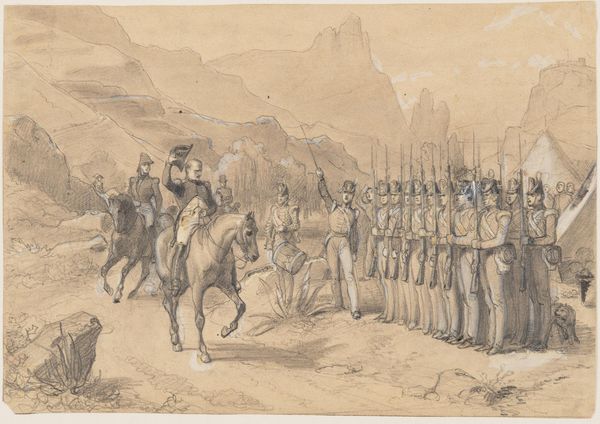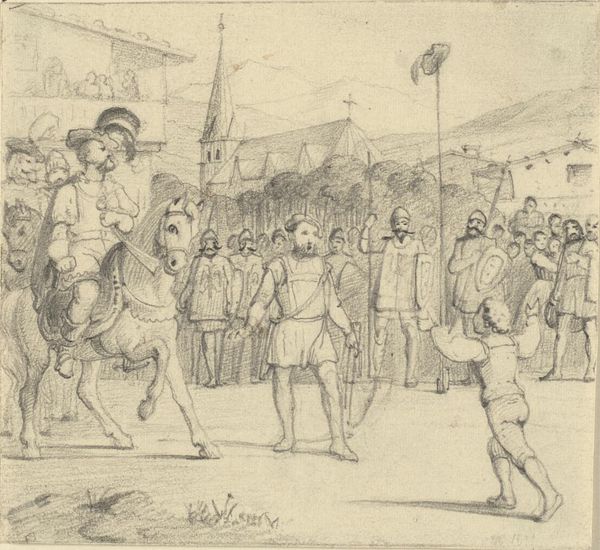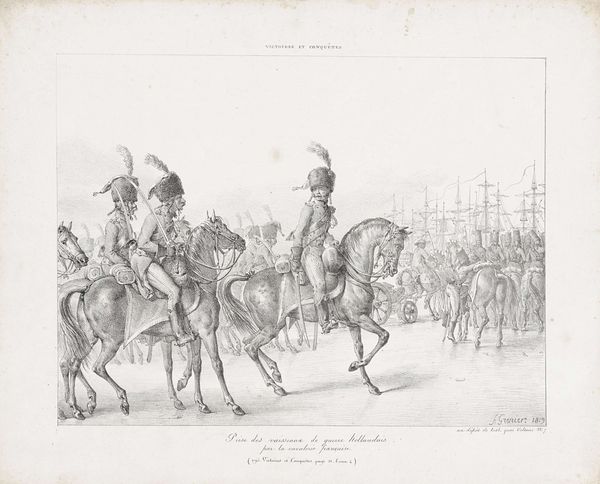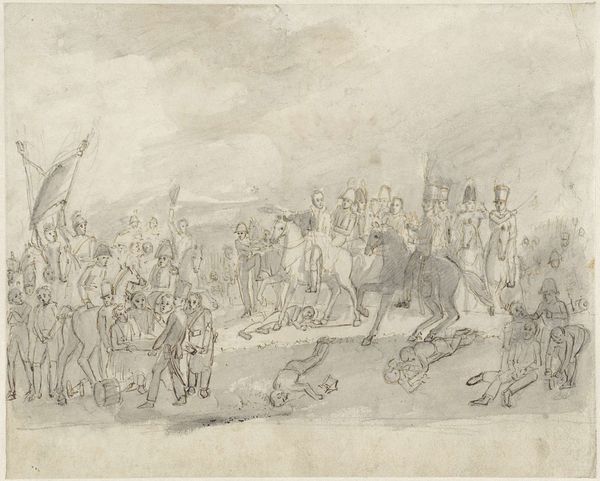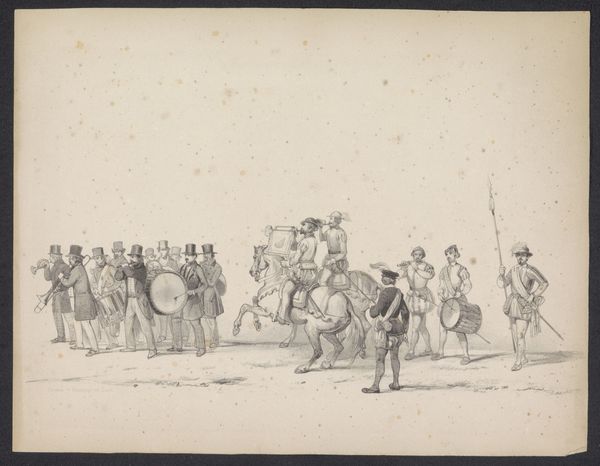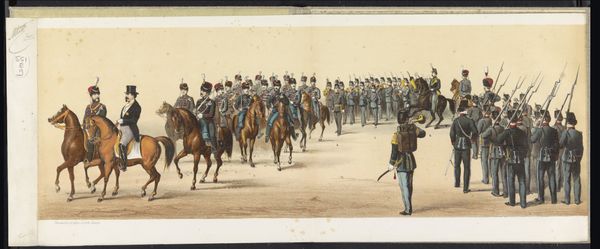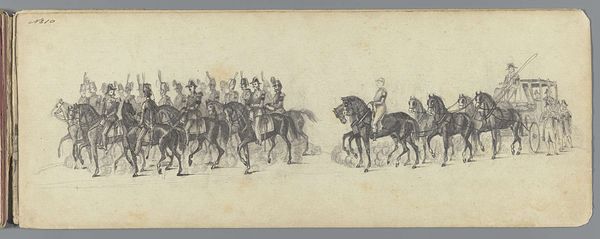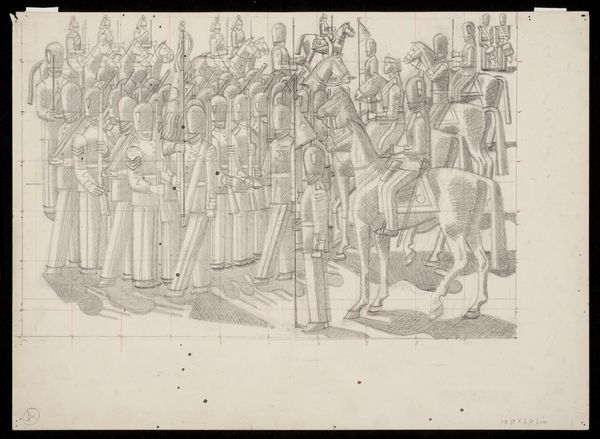
drawing, pencil
#
drawing
#
aged paper
#
light pencil work
#
pen sketch
#
sketch book
#
hand drawn type
#
personal sketchbook
#
pen-ink sketch
#
pencil
#
pen work
#
sketchbook drawing
#
genre-painting
#
history-painting
#
sketchbook art
#
realism
Dimensions: height 140 mm, width 365 mm
Copyright: Rijks Museum: Open Domain
This anonymous drawing from 1865 depicts the funeral procession of Anna Paulowna. Anna was a Russian princess who became Queen of the Netherlands through her marriage to King William II. The drawing gives insight into the cultural norms around royal death and mourning in the Netherlands. What's striking is the scale of the procession and the presence of military personnel. It is easy to imagine the sounds of drums and the marching of feet; the visual and auditory display was intended to underscore the power and prestige of the monarchy, even in death. This image also reflects the gendered nature of power. Anna Paulowna, though a queen, achieved her status through marriage. The procession, while honoring her, is predominantly male, reinforcing the patriarchal structures of the time. The solemnity of the event and the rigid formality of the procession also speak to the emotional distance between the monarchy and the general population. Ultimately, the drawing captures a moment in time when personal grief intersected with public spectacle, revealing the complex relationship between royalty, power, and the people.
Comments
No comments
Be the first to comment and join the conversation on the ultimate creative platform.
